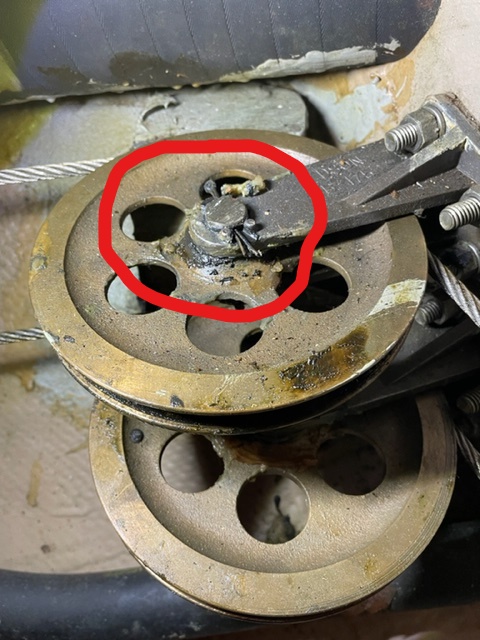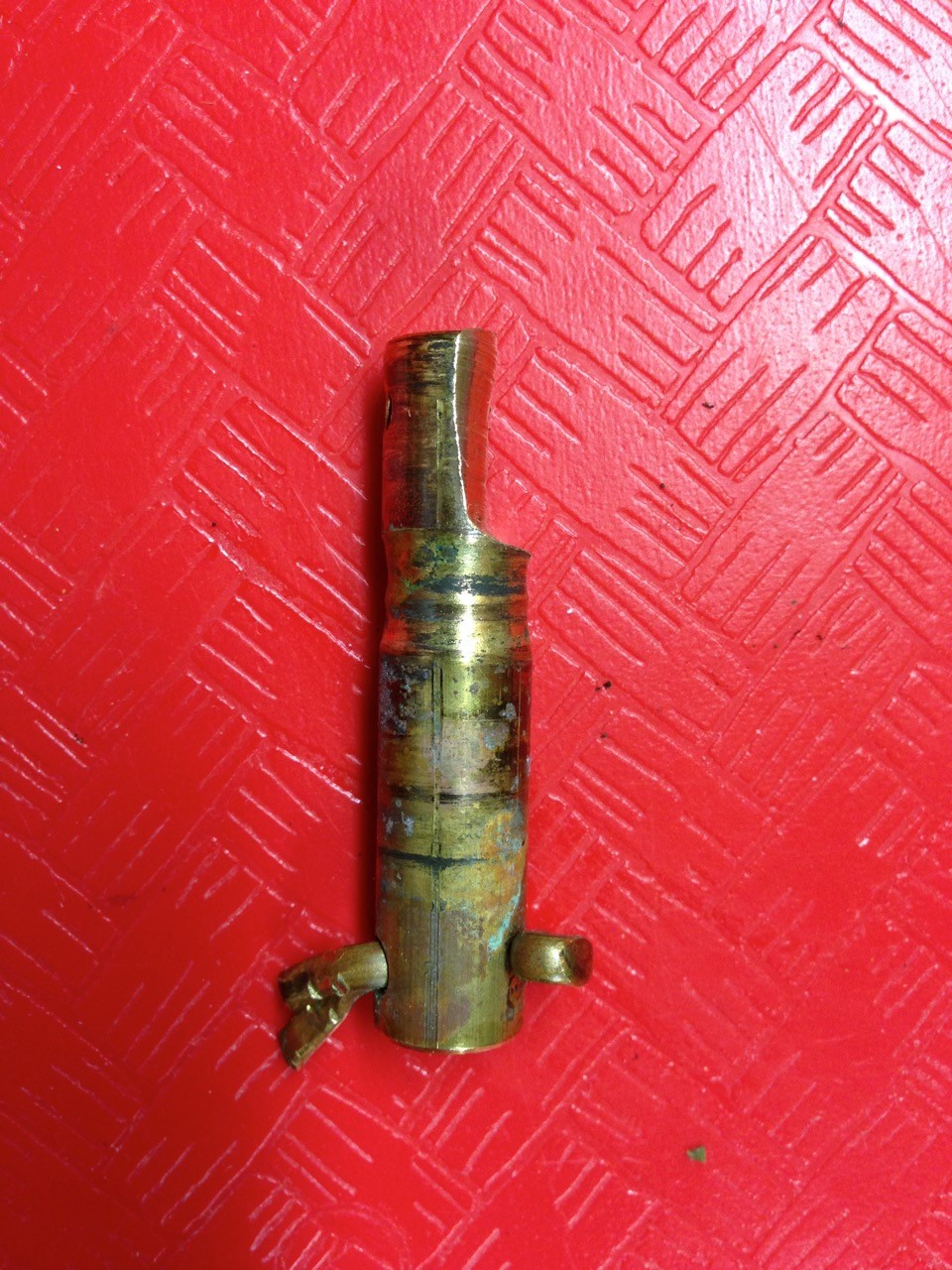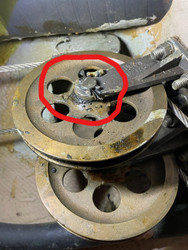Pre-purchase steering inspection
Posted by Dave on Apr 15th 2022
Spring is happening with a vengeance here in New England, which means that brokerage activity is or will soon be in full bloom to match the daffodils. While most pre-purchase surveys will give a broad overview of a boat's steering system, critical details and the proverbial fine toothed comb are usually missed. We're excited to partner with a great YouTube channel - Captain Q Yacht Hunter - to bring awareness to some common situations affecting sailboats of every age.
The boat that these pictures are from would broadly be described as having "an Edson steering system that appears to be in fine shape." A sharper look would reveal that yes, the overall system has general health relative to a 40 year old boat, but there are several red flags and items that need attention.
This first photo shows a quadrant that you might think is in ok shape. A closer look reveals that it has been brazed (think "welded") together in 4 spots. This is evidence that the quadrant broke at one point and was reconstructed. While possibly ok as a short term fix in a pinch, brazing creates strong spots in a structure at the brazes, which creates stress risers. The areas immediately adjacent to these brazes are now functionally weak spots. An incident like the one that damaged the quadrant initially (likely either a hard grounding or dropping the wheel while the boat was in reverse) would have a lower threshold for causing damage than the original one did. And of course a high stress incident in normal sailing, like a broach, could cause failure here. The safe course is to replace the quadrant.

The second photo shows that the sheave pins and bushings have been well greased, but what these sheaves really want is oil. Oilite bushings like these are designed to "drink" oil and self lubricate for an extended period of time. Grease is too viscous to be absorbed by the Oilite material, so these aren't as well lubricated as they could have been.

While we didn't have time on this day to drop cable tension and check the pivots, these are bronze sheave pins which were used up until about the early 80s. Though they performed well in terms of self-lubrication, over the course of several decades of use they do wear out as shown in the picture below. This wear is completely hidden from casual observation as it happens hidden between the sheave and the pin. The only way to easily check for this is to drop cable tension and see if the sheave has play in the idler bracket. Better yet, pull the pin to check wear. The quick and easy solution here would be to pull the pins, scrub the sheaves up, oil the bushings, replace the pins with steel pins, and reinstall. These sheaves look to be in excellent shape given their age, which is primarily a sign of good cable alignment and tension. Had there been abrasion at the sheave edges indicating poor alignment and/or tension, a more thorough inspection of alignment would be merited, and sheave replacement would have been a good course.

We gave a good check underneath the pedestal to see the deck laminate's health there, and pedestal bolt health as well. The pedestal was overall in great shape, with no bubbling of the powder coat finish which is always a warning sign. Since the pedestal's last maintenance was undocumented, a general pedestal maintenance including replacement of the needle bearings.
The chain appears to have been regularly greased, which is great, but there's also very evident rusting and pitting. The wire didn't appear to have any broken strands, and the nico-press connections are secure, but it also shows small lines of rust. Our standing recommendation for chain and wire in saltwater use is a 7 to 10 year replacement schedule given regular maintenance, and this chain and wire seem to be well past that interval so a full replacement is warranted.
It's wonderful to see so many boats changing hands with new enthusiasm and cruising ambitions, but so many of these boats are at an age where a life of use, even with good installation and maintenance, necessitates replacement of least a few key wear parts. Situations like the quadrant on this boat are not at all uncommon given years of use and what happens to boats in their lives, so it pays to know what you're getting into and to give some thought to whether what's needed to bring the systems up to full nick makes an apparent bargain into a potential budget buster.

